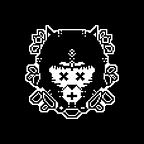P5: Creating a Gritty Office Den
Adding Reflections to the scene.
Objective
Add Reflections by using Reflection probes and Screen Space Reflections.
Plan
The space is split into two sides by bookshelves. To properly have a decent reflection around the scene, I will have a reflection probe on both rooms. I will also add an override to my volume called screen-space reflection.
Reflection Probes
The first thing I did was add reflection probes to each room.
It will allow a more accurate reflection if I only placed one to cover the whole room. I made sure real-time mode is set to “On Enable.” I only want Unity to render the probe once when the scene becomes active.
I also ticked “Use influence Volume” and “Distance Based Roughness.” It will allow the probe to only render within its volume and produce accurate results.
I also want to make sure the reflection probes ignore all small game objects that aren’t important to render. Such small game objects would be trash and ashtrays with cigarettes. I put them all in a layer called “Not in Reflection.”
Images to the left are without reflection, and to the right are with reflection.
There’s a subtle difference that creates a realistic feeling to the environment.
Screen Space Reflections
To add an extra layer of realism, I added an override to my volume called “Screen Space Reflections.” The difference between SSR and reflection probes is reflection probes stores the data it receives from the camera to cube maps, while SSR uses screen space data to calculate reflections.
It means SSR is more expensive but gives a nice effect on the environment when used correctly.
I made sure I enabled the override with Ray tracing. Ray tracing adds an extra level of realism with the repercussion of losing some performance. I also made sure to ignore all game objects that are small and not important in the Layer Mask. Lastly, for mode, I chose performance over quality and adjusted some of the properties below it to come up with something nice.
Below are screenshots comparing reflection probes to the left and reflection probes with SSR to the right. Again, a subtle difference! The scene is also dark which does not help to compare but it’s there if you look closely!
SSR accurately reflects the environment more than what the reflection probe does.
SSR is like the parent of the reflection probe. It helps complete what the reflection probe couldn’t finish. Especially on surfaces that shouldn’t receive lighting.
Conclusion
I think using both reflection probes and SSR might be quite ideal as I’ve experimented here. As long as I still have great performance, then I don’t see anything wrong here. Correct me if I’m wrong!?
I know that SSR has its limitations, such as not reflecting off of transparent objects, which is where reflection probes come in.
Below are screenshots without any reflection to the left and with reflections to the right.
My next post will be about adding light probes and post-processing effects!
Gabriel
